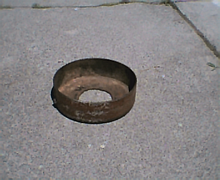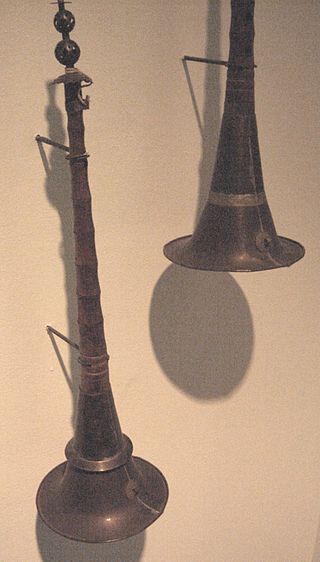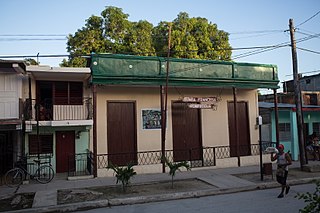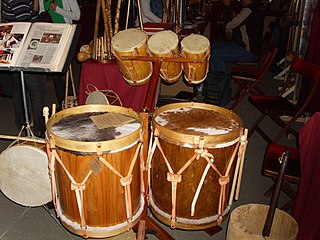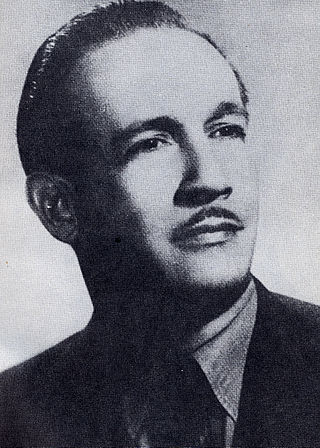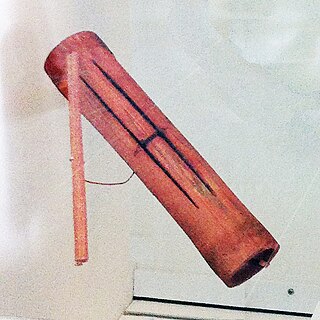History

Origins
The history of the conga (also known as comparsa conga or conga de comparsa) is obscure and its origins remain largely unknown. In the early 19th century, although the word "conga" is not found in written sources, there are references to "tumbas", and, according to Brea and Millet (1993:204), "tumba" refers to the percussion ensemble of the conga. "Tumba" is mentioned in connection with mamarrachos (summer festivals in Santiago de Cuba) as early as 1847 (Pérez I 1988:54). A word that may be synonymous with "tumba" is the word "tango", mentioned as early as 1856 (Pérez I 1988:79). Unfortunately, most 19th-century writers were extremely negative towards Afro-Cuban culture and little information about the tumbas or tangos was recorded.
Relation to Kongo ethnic group
"Congo" was the word used to designate African slaves brought to Cuba from the Congo region of Africa (currently the Republic of the Congo, the Democratic Republic of the Congo and Angola). According to the rules of Spanish grammar, "congo" became a masculine noun/adjective and its feminine counterpart was formed by changing final "o" to "a." This Spanish noun/adjective pair has been used in Cuba to designate anything pertaining to the above-mentioned African slaves and their culture. Therefore, some have assumed that "conga" was originally an adjective (as in the expression comparsa conga), and that the comparsa was dropped and conga changed to a noun (del Carmen et al. 2005). However, the word conga may also derive from either "maconga" (song) or "nkunga" (song, sound) in "the language of the Congo" (Ortiz 1924:118).
Ortiz (II 1952-5:34) also states that the drum called bokú (one of the instruments of the conga) is "...typical of the congos." Goodman mentions the “comparsa conga” in conjunction with a carnaval figure known as “el Rey del Congo” (the "King of the Congo”), which seems to confirm a kongo ethnic connection to the conga (Pérez I 1988:104). [4] Also, the word bokú means “drum” in Kikongo (Orovio 1981:58).
Antipathy after independence
In the early years after the establishment of the Republic of Cuba in 1902, there were numerous decrees by successive mayors of Santiago de Cuba banning "African drums and tangos". (Pérez I 1988:177, etc.) Apparently, these decrees were not faithfully enforced:
“In spite of the prohibitive proclamation, the tumbas echoed loudly everywhere, including in the most central and heavily-traveled areas. And together with the raucous and uncouth sound of the African tumba, the well-known arrolladera [5] displayed its contortions.” (Pérez I 1988:254)
According to Pérez,
“Although the prohibition of African manifestations was reiterated, the comparsas were permitted. In reality, it was just a question of maintaining on paper that which could not really be enforced due to the express desire of the bourgeoisie, to whom these manifestations were a diversion, ‘something colorful’ and amusing.” (Pérez I 1988:179, note 13)
Debate
Opponents to the conga in print outnumbered defenders. The conga was a thing of the illiterate Afro-Cuban working people, while the writers of editorials and angry letters to the editor were upper-class Hispano-Cubans. One prominent attacker of the conga, and perhaps the most florid in his prose, was the long-time mayor of Santiago, Desiderio Alberto Arnaz II (father of American TV star Desi Arnaz), who expressed the feelings of some upper-class Cubans in a newspaper article of 1925:
“I will have you know that the initial days of our traditional masquerades – which have just passed – have left painful impressions in my mind. Allow me to explain. In every way, the carnival has been a joyful celebration of the soul of the people, an exhibition of good artistic taste, a competition of original ideas, a contest in which thought and action have always vied in giving objective form to the perfect conception of Beauty and towards the noble intent of the dignification of society; Paris, Rome, Venice, Madrid and Havana itself offer in their carnestolendas lessons on how complaisant liberty ought to be used in those periods of fantasy in order to educate the wishes and aspirations of the citizen. But here, in our city, in one of those scientifically inexplicable regressions towards a dark past, certain elements of our commonwealth seem committed – under the pretext of carnaval– to the repugnant task of checking human progress and causing harm to Civilization with their excesses. I refer to the ‘conga,’ that strident group of drums, frying pans and shrieks, to whose sounds epileptic, ragged, semi-nude crowds run about the streets of our metropolis, and who, between lubricous contortions and abrupt movements, show a lack of respect to society, offend morality, discredit our customs, lower us in the eyes of people from other countries and, what is worse, by their example, contaminate schoolchildren, who I have seen carried away by the heat of the lesson, panting and sweaty, engaging in frenetic competitions in corporal flexibility in those shameful tourneys of licentiousness.” (Pérez I 1988:337)
On the other hand, an opinion poll of 1936 on the conga elicited the following comments:
“…Let the hours, the minutes and the seconds pass as they will, as long as they do so as quickly as possible so that I can slap that bocú... From today, it is only 18 days until the carnaval starts. How it torments me to think that there are still so many days to go; I wish it were tomorrow;... I want you to know... that the sound of the conga nourishes me, the sound of the frying pans gives me life and the sound of the bocú drives me crazy. Several days prior to the beginning of rehearsals, I went to see a doctor; I felt overwhelmed, sad, pensive. He prescribed and gave me some injections, and I felt absolutely no different, but as soon as I heard the sound of the first bocú, I was completely cured, I felt strong and ready for anything. And I advise those who are unhappy and listless to get an invigorating injection of bocú, conga and frying pans and you’ll be OK in 24 hours.” (Pérez II 1988:22-3)
Conga of Los Hoyos

Los Hoyos is a district in downtown Santiago de Cuba and home to the conga of Los Hoyos. The date of the founding of this conga is unknown, but it was already in existence in 1902 (del Carmen et al. 2005).
At first, the instruments of the group were a pilón, some bocúes, a cowbell and a güiro. Later, two redoblantes were added, the number of bocúes was increased and the cowbell and güiro were replaced by frying pans. Later still, the frying pans were replaced by the campanas (automobile brake drums or other pieces of metal chosen for their distinct sound qualities). Also added were the quinto and the requinto. Los Hoyos first began using a corneta china in 1916 (del Carmen et al. 2005), one year after the instrument was introduced by the conga Los Colombianos from Tívoli. [1]
During the carnaval season, Los Hoyos performs a traditional event known as an "invasión," in which it marches around the streets of Santiago and visits the neighborhoods where the other famous congas [6] are located. This "invasión" commemorates the invasion of the Army of Liberation at the end of the War of Independence. Los Hoyos also closes the traditional parades of the Carnaval of Santiago de Cuba (del Carmen et al. 2005).
